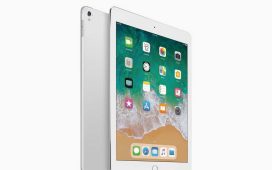
In the world of the Internet of Things (IoT), connectivity is the backbone of successful device communication. IoT SIM cards play a pivotal role in establishing this connectivity. These specialized SIM cards, also known as M2M (Machine-to-Machine) SIM cards, enable IoT devices to connect to cellular networks and exchange data. However, to ensure seamless connectivity and interoperability across various devices and networks, it is essential to have standardized IoT SIM card solutions. In this blog post, we will explore the importance of IoT SIM card standards and interoperability, and how they drive seamless connectivity in IoT deployments.
The Need for IoT SIM Card Standards
IoT SIM card standards are vital for ensuring compatibility and interoperability among different devices, networks, and service providers. Without standardized SIM cards, organizations may face several challenges, including:
Fragmented Connectivity: In the absence of standards, IoT deployments may suffer from fragmented connectivity, where devices using different SIM card technologies or protocols cannot communicate effectively. This fragmentation can hinder data transmission, reduce efficiency, and limit the scalability of IoT solutions.
Vendor Lock-In: Lack of standards can lead to vendor lock-in, where organizations become dependent on specific SIM card suppliers or proprietary technologies. This dependence restricts flexibility and hampers the ability to switch providers or leverage multiple network operators to optimize connectivity.
Increased Costs: Incompatibility between SIM cards and devices may necessitate custom development, configuration, or additional hardware, resulting in increased costs. Standardized IoT SIM card solutions help eliminate these extra expenses by ensuring plug-and-play compatibility.
Key IoT SIM Card Standards
Several industry organizations and standardization bodies are working towards establishing common IoT SIM card standards. Here are some of the key standards driving IoT SIM card interoperability:
GSMA eUICC: The GSMA (Global System for Mobile Communications Association) has introduced the Embedded Universal Integrated Circuit Card (eUICC) specification. This standard enables remote SIM provisioning, allowing organizations to remotely manage SIM profiles without physically replacing SIM cards. eUICC provides flexibility, as it allows devices to switch between different network operators and subscription plans without changing the physical SIM card.
3GPP: The 3rd Generation Partnership Project (3GPP) is a collaboration of standardization bodies that develop specifications for mobile communication technologies. 3GPP has defined standards for SIM cards in IoT applications, including LTE-M (Long-Term Evolution for Machines) and NB-IoT (Narrowband IoT). These standards optimize IoT connectivity by enabling low-power and low-cost communication solutions.
OneM2M: OneM2M is a global standards organization focusing on Machine-to-Machine and IoT interoperability. It provides a common framework for IoT devices, applications, and platforms to communicate seamlessly. OneM2M standards cover various aspects of IoT, including device management, security, and interoperability.
Benefits of IoT SIM Card Standards and Interoperability
Adhering to IoT SIM card standards and ensuring interoperability offers numerous benefits to organizations deploying IoT solutions:
Compatibility and Flexibility: Standardized SIM cards enable interoperability between devices, regardless of the network operator or technology used. This compatibility allows organizations to choose the best-fit devices, switch network operators, or expand their IoT deployments without restrictions.
Scalability and Future-Proofing: IoT SIM card standards ensure scalability, allowing organizations to easily scale up their deployments as the number of connected devices grows.
Enhanced Connectivity Options: IoT SIM card standards open up a wide range of connectivity options for organizations. With interoperability, devices can seamlessly connect to different types of networks, such as 2G, 3G, 4G, or even emerging technologies like 5G. This flexibility ensures that IoT solutions can leverage the most suitable network coverage and bandwidth for their specific use cases.
Simplified Management and Provisioning: Standardized IoT SIM cards streamline the management and provisioning processes. With common protocols and interfaces, organizations can centrally manage their SIM cards, remotely provision them, and easily activate or deactivate services as needed. This simplifies SIM card lifecycle management, reduces administrative overhead, and improves operational efficiency.
Interchangeability and Interchangeability: IoT SIM card standards promote interchangeability, allowing devices to be easily replaced or upgraded without disrupting the entire ecosystem. This flexibility is particularly valuable in scenarios where devices need to be serviced, repaired, or replaced. With standardized SIM cards, organizations can seamlessly swap devices while maintaining connectivity and preserving data integrity.
Increased Market Competition and Innovation: IoT SIM card standards foster healthy market competition among SIM card providers and network operators. When multiple providers adhere to common standards, organizations have more options to choose from, leading to competitive pricing, improved service quality, and accelerated innovation. This competition drives the development of new features, improved performance, and cost-effective solutions in the IoT connectivity space.
Implementing IoT SIM Card Standards and Interoperability
To leverage the benefits of IoT SIM card standards and interoperability, organizations should consider the following implementation strategies:
Choose Standards-Compliant Devices and SIM Cards: When procuring IoT devices, ensure that they comply with established IoT SIM card standards. Look for devices that support eUICC, 3GPP standards, or other relevant specifications, depending on your connectivity requirements. Similarly, select SIM card providers that adhere to these standards, ensuring compatibility and interoperability.
Collaborate with Standardization Bodies: Stay involved with industry standardization bodies, such as GSMA, 3GPP, and OneM2M. Participate in working groups and contribute to the development of IoT SIM card standards. Engaging with these organizations allows you to stay updated with the latest developments, influence future standards, and benefit from collective industry expertise.
Conduct Interoperability Testing: Before deploying IoT solutions, conduct thorough interoperability testing to ensure seamless communication between devices, SIM cards, and networks. Testing can help identify and resolve any compatibility issues, ensuring that the entire ecosystem functions harmoniously.
Leverage IoT Platforms and Solutions: Choose IoT platforms and solutions that support standardized IoT SIM cards and provide interoperability features. These platforms often offer built-in support for remote SIM provisioning, SIM card management, and integration with multiple network operators, simplifying connectivity management and enhancing scalability.
Future-Proof Your IoT Deployments: Consider future-proofing your IoT deployments by selecting IoT SIM card standards that align with emerging technologies and industry trends. For example, as 5G networks become more prevalent, ensure that your IoT devices and SIM cards are compatible with 5G technology. This future-proofing allows your deployments to adapt and leverage advancements in connectivity without significant infrastructure changes.
Conclusion
IoT SIM card standards and interoperability are essential for driving seamless connectivity in IoT deployments. By adhering to established standards, organizations can achieve compatibility, flexibility, and scalability while avoiding vendor lock-in and reducing costs. Standardized IoT SIM cards enable organizations to choose the best-fit devices, leverage multiple network operators, and simplify management and provisioning





